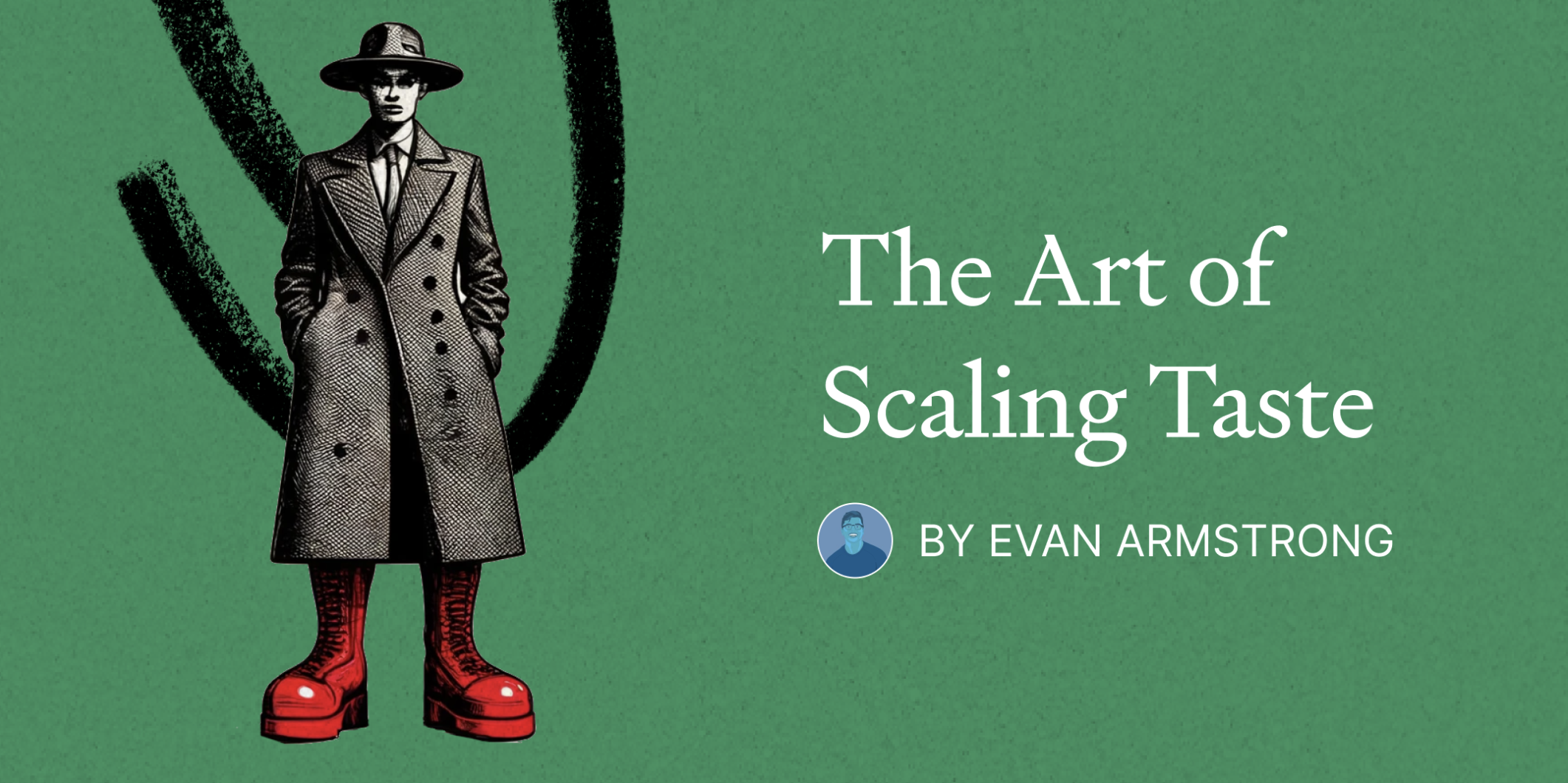The Art of Scaling Taste

🌈 Abstract
The article discusses how the startup MSCHF has successfully scaled its creative vision and "taste" to build a thriving business, despite operating in an environment of abundant products and intense competition. It explores MSCHF's unique approach to product development, distribution, and maintaining its creative identity as it grows.
🙋 Q&A
[01] Scaling Taste
1. How has MSCHF been able to scale its creative "taste" without compromising it?
- MSCHF explicitly programs the idea of scaling into their products, making the number of people who use or see the creation an integral part of the art's statement.
- They marry the business's goals with the goals of the product by making scale a key component of the creative process.
- MSCHF views content and distribution as the same thing, believing that each object gets better with more participation, which in turn benefits the company.
2. What is MSCHF's process for generating and selecting new product ideas?
- Anyone at MSCHF can suggest ideas, which are then reviewed by a core team every 1-2 months.
- They aim to select the "hardest" and most ambitious projects that push their creativity and have revenue potential.
- They are comfortable with some projects losing money, as long as they fulfill the creative needs of the team and align with MSCHF's ethos.
3. How does MSCHF's approach to individual artists and creative talent differ from traditional organizations?
- MSCHF does not allow individual artists to put their names on the products they create.
- By subsuming individual identities into the collective, MSCHF is able to provide a larger platform and more resources for their creativity.
- This approach helps align taste and creative vision across the organization.
[02] Maintaining Taste and Distribution
1. What challenges has MSCHF faced in maintaining its creative "taste" as the company has grown?
- There are concerns that MSCHF has released too many similar products, like shoes, which could be seen as repetitive and compromising their original creative vision.
- The article suggests that the temptation to chase revenue and audience by repeating successful formats is a common challenge for creative businesses.
2. How has MSCHF approached distribution and customer relationships?
- MSCHF has experimented with unconventional distribution methods, like using Venmo and SMS, which have sometimes resulted in them being banned from certain platforms.
- Rather than relying on a centralized customer database, MSCHF has a "hodgepodge" of registered emails, phone numbers, and social media followers.
- The article suggests that MSCHF's strong narrative network effects and cultural relevance have made traditional marketing and distribution channels less critical for them.
3. What is MSCHF's long-term vision for the company?
- MSCHF's founder, Gabriel Whaley, says he has to think about the company in a 100-year timeframe to avoid taking shortcuts.
- This long-term perspective allows MSCHF to focus on being true to their creative vision and identity, rather than being swayed by short-term fluctuations in public perception or personal feelings.